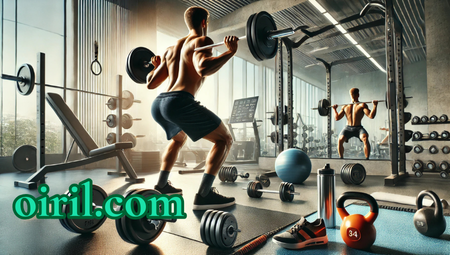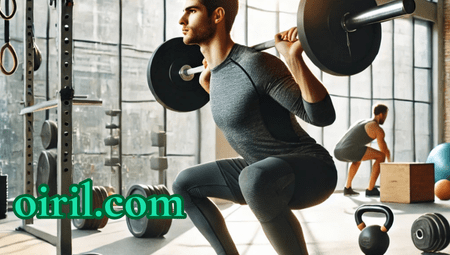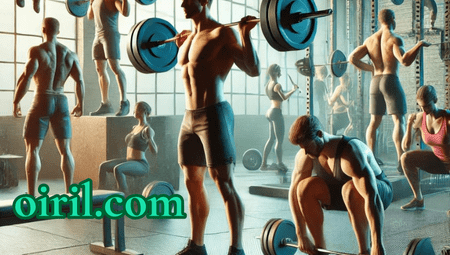Strength training, often referred to as resistance training, is a powerful way to improve overall health, build muscle, and enhance physical performance. Whether you’re a beginner looking to establish a solid fitness foundation or an experienced lifter aiming to add variety to your routine, a full-body strength workout ensures balanced development and increases muscular endurance. This article dives deep into some of the most effective exercises targeting major muscle groups across your body, all designed to maximize strength gains and promote overall fitness.
The Benefits of Full-Body Strength Training

A full-body strength workout offers a range of benefits beyond just building muscle. Here’s a breakdown of why incorporating these exercises into your routine can be transformative:
- Improved Functional Strength: Working multiple muscle groups enhances overall functional fitness, making daily tasks easier and improving overall body coordination.
- Calorie Burn: By engaging larger muscle groups, full-body exercises burn more calories, which supports fat loss and body composition goals.
- Increased Metabolic Rate: Building muscle increases your resting metabolic rate, allowing you to burn more calories even when at rest.
- Balanced Development: A full-body routine ensures that all major muscle groups are targeted, reducing the risk of muscular imbalances and injury.
- Time Efficiency: With full-body workouts, you can achieve optimal muscle stimulation in a shorter period, making it ideal for those with busy schedules.
Key Full-Body Strength Training Exercises
A complete full-body workout includes compound exercises—movements that engage multiple joints and muscle groups. Below are some of the most effective exercises for targeting the upper body, lower body, and core muscles.
Squats
Primary Muscles Targeted: Quadriceps, hamstrings, glutes, calves, and core.
Squats are often regarded as one of the most essential exercises for building lower body strength. Variations like the back squat, front squat, and goblet squat add versatility and different levels of difficulty, accommodating various fitness levels.
- Execution:
- Start by positioning your feet hip-width apart, with your toes pointing slightly outward.
- Engage your core, keep your chest up, and slowly lower your hips down as if sitting in a chair.
- Aim to bring your thighs parallel to the ground or lower, then drive through your heels to return to the starting position.
- Benefits: Squats not only strengthen the legs but also engage the core for stability. They’re crucial for improving functional strength and balance, both in athletic performance and daily movements.
Deadlifts
Primary Muscles Targeted: Hamstrings, glutes, lower back, traps, and core.
Deadlifts are a powerhouse movement, targeting the posterior chain and helping build strength and stability in the lower body and core. Variants like the conventional deadlift, Romanian deadlift, and sumo deadlift provide options for different preferences and goals.
- Execution:
- Stand with feet shoulder-width apart, with a barbell over the middle of your feet.
- Bend your knees slightly, grip the barbell with hands just outside your knees, and engage your core.
- With a flat back and shoulders pulled down, lift the barbell by pushing through your heels and extending your hips and knees simultaneously.
- Lower the bar in a controlled manner, maintaining core engagement.
- Benefits: Deadlifts strengthen the lower back, improve posture, and help increase overall body strength, as they require coordination across multiple muscle groups.
Bench Press
Primary Muscles Targeted: Chest, shoulders, and triceps.
The bench press is a classic upper-body exercise focusing on the pectoral muscles, shoulders, and triceps, making it a staple in most strength training routines. Variants such as the incline and decline bench press allow for targeted focus on different areas of the chest.
- Execution:
- Lie on a flat bench with your feet firmly planted on the floor.
- Grip the bar slightly wider than shoulder-width, lower the bar slowly to your chest, and push it back up in a controlled manner.
- Benefits: The bench press is effective for building upper body strength and muscle definition, supporting other pushing movements both in the gym and daily life.
Pull-Ups or Lat Pulldowns
Primary Muscles Targeted: Latissimus dorsi (lats), biceps, and upper back.
Pull-ups are a fantastic exercise for the upper back and biceps, challenging the upper body and core stability. Lat pulldowns are a good alternative for those who struggle with body-weight pull-ups.
- Execution:
- For pull-ups, grip a pull-up bar with your hands slightly wider than shoulder-width apart.
- Engage your core, and pull yourself up until your chin is over the bar, then lower back down with control.
- Benefits: Pull-ups and lat pulldowns develop upper back strength, which is essential for a balanced physique and improves grip strength and posture.
Lunges
Primary Muscles Targeted: Quadriceps, glutes, hamstrings, and calves.
Lunges are a versatile lower body exercise that targets each leg individually, helping to improve balance, coordination, and unilateral strength.
- Execution:
- Step forward with one leg, lowering your body until both knees are at a 90-degree angle.
- Push through the front heel to return to the starting position and repeat on the other side.
- Benefits: Lunges strengthen and stabilize the legs and core, providing a balanced approach to lower body training and increasing functional strength.
Overhead Press
Primary Muscles Targeted: Shoulders, upper back, and triceps.
The overhead press is a vital exercise for shoulder strength, stability, and upper-body endurance. It can be performed with dumbbells or a barbell.
- Execution:
- Stand with feet shoulder-width apart, holding weights at shoulder height.
- Press the weights overhead until your arms are fully extended, then lower them back down in a controlled manner.
- Benefits: The overhead press improves shoulder stability, enhances upper body strength, and supports healthy posture.
Plank
Primary Muscles Targeted: Core, shoulders, and lower back.
Planks are an isometric core exercise that also engages the shoulders and glutes, enhancing stability across multiple muscle groups.
- Execution:
- Start in a push-up position with forearms on the ground, keeping your body in a straight line from head to heels.
- Hold this position for a set period, maintaining a tight core and avoiding any sagging in the lower back.
- Benefits: Planks build core endurance, which supports all movements and protects the spine, especially during strength exercises.
Building a Full-Body Workout Routine
Creating a balanced full-body workout requires thoughtful selection of exercises that target major muscle groups. Here’s a sample workout plan using the exercises covered:
- Warm-Up: 5-10 minutes of dynamic stretches or light cardio (e.g., jumping jacks, leg swings).
- Workout Routine:
- Squats: 3 sets of 8-12 reps
- Bench Press: 3 sets of 8-12 reps
- Deadlifts: 3 sets of 8-10 reps
- Pull-Ups or Lat Pulldowns: 3 sets of 8-12 reps
- Lunges: 3 sets of 10 reps per leg
- Overhead Press: 3 sets of 8-10 reps
- Plank: 3 sets, hold for 30-60 seconds each
- Cooldown: Light stretching focusing on major muscle groups used during the workout.
Safety Tips and Common Mistakes
- Use Proper Form: Avoid overloading with heavy weights, especially as a beginner. Prioritize form to prevent injuries.
- Progress Gradually: Increase weights or reps only when you’re comfortable and can maintain form.
- Listen to Your Body: Pay attention to any discomfort or strain, and adjust exercises if needed.
- Incorporate Rest Days: Full-body workouts engage many muscles, so allow adequate recovery time.
A well-rounded full-body strength training routine incorporating these exercises provides numerous physical benefits, from muscle building to improved functional strength. By focusing on form, consistency, and progressive overload, these exercises can help you achieve a balanced, strong physique, preparing you for both athletic and everyday challenges. Whether you’re new to fitness or looking to enhance your routine, these exercises offer a robust foundation for your strength training journey.




